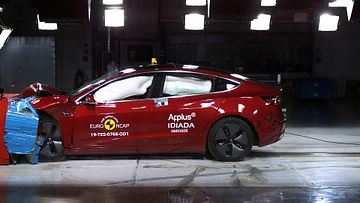
In 2001, Ford attempted to implement an inflatable seat belt—which never really took off—and different automotive producers have attempted to tailor seat belts to a driver’s particular person physique sort. Newer cars now come with so many safety options it can be hard to determine which of them are actually useful, and which of them are really just “bells and whistles” that you don’t really need. This is designed so that it will compress upon influence, lessening the chance of rib injuries to drivers. This has been proven to work in lots of cases, and it has lowered the risk of driver fatalities by 12%, and critical injuries and demise dangers have been lowered by 38%.
The Most Important Safety Feature on Your Car Is…
This mainstream mid-size sedan comes commonplace with a rearview digicam, automatic ahead emergency braking, a drowsy-driver monitor, and an “intelligent” ahead-collision warning. Similar to adaptive cruise management, forward-collision warning systems use radar, cameras, or each to look at the highway ahead for gradual or stopped traffic. Forward-collision warning is a more primary form of collision mitigation and can alert the driver–often with each a visual and an audible warning–that a collision is imminent, in the hope that the driver will hit the brakes. These techniques are sometimes accompanied by automated emergency braking that will brake for the driver if no action is taken, but drivers must be aware that not all autos combine each features. We find blind-spot screens usually work fairly well and may help maintain you from slicing off one other driver.
Many consumers are turning to the used car market as an alternative to stretch their automotive dollars. Unfortunately, older vehicles may lack essential safety features, notably ahead computerized emergency braking that can help avoid or lessen the consequences of a crash if the driving force isn’t responding rapidly sufficient. Facial recognition software is simply starting to seem on reasonably priced automobiles just like the Subaru Forester which was revealed on the current New York Auto Show. It continuously measures a driver’s stage of alertness and warns the driving force when it sees you not paying attention. Other carmakers will also comply with suit within the subsequent few years till this technology, like ABS for instance, becomes normal gear.
Xenon headlights are brighter and more precisely painting the colour temperature of natural sunlight than halogen bulbs. LED headlights turn everything up a notch, plus they use a fraction of the vitality. Adaptive headlights mechanically maintain the lights degree in an attempt to hold their piercing beams out of oncoming drivers’ eyes, plus they can swivel several levels and light-weight up further facet beams when cornering.
Fortunately, forward auto-braking is fast discovering its means into extra-inexpensive automobiles and crossovers. The least expensive of the bunch is the compact Kia Forte sedan, which comes standard with a self-braking system for $18,715. But whereas these options are provided at present on a wide variety of automobiles, listed below are three new safety technologies that can start to appear on manufacturing vehicles inside the subsequent few years.
The CR survey—which incorporates comments from members who have benefited from these techniques of their automobiles—exhibits that superior driver-assist options are coming of age and are clearly helpful for some drivers—probably even lifesaving. These methods use a variety of “eyes”—cameras, radar, and other sensors—to see what’s occurring on the roads round them. They course of that data using onboard computer systems that can respond, typically sooner than a human driver, when a crash seems imminent. They can brake for the driving force; they can provide preliminary steering input to keep a automotive in its lane; they usually can keep a secure speed and distance from other cars in site visitors, all with minimal input from drivers.
Another preventative know-how, designed to detect drowsiness, works through the use of information from lane departure sensors to establish jerky actions or swerving in and out of lanes. Once acquired, a coffee image on the dashboard will illuminate or a verbal response will sound to alert the driver that they should take a break. The driver’s seat can even vibrate to startle them in the hopes that they turn into extra alert. Both of these applied sciences are not but perfect and are often defective in detecting drowsiness.
During testing, the IIHS discovered that the way in which the airbag deploys leaves the head vulnerable to contact with a ahead structure. The four-door Nissan Sentra had a rating of poor rating in IIHS crash tests. The AAA Foundation for Traffic Safety estimates that if put in on all vehicles, crash-avoidance expertise might stop more than 2.7 million crashes, 1.1 million injuries and nearly 9,500 deaths yearly. “Safety Technology Degree Program Information.” Study.com, 21 Sep 2016 published.
